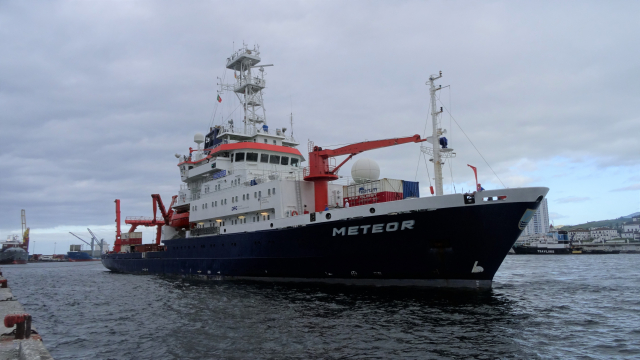Dieser Text ist zur Zeit nur auf Englisch verfügbar...
The marine ecosystem on the shelf in the upwelling off Mauritania and Senegal is of great scientific and economic interest: (1) As the highest eutrophic regional tropical ecosystem worldwide, which additionally is strongly affected by the CO2-enriched upwelled waters, it is a textbook example of natural eutrophication and acidification; it is a scenario for the changes expected for the future seas. (2) It is one of the most productive fisheries grounds on earth that at the same time shows severe consequences of overfishing.
The expedition focused on biogeochemical processes, trophic networks and productivity, and the interaction between shallow waters, the shelf and the open ocean. From a total of 95 ship stations, the physical water profiles were assessed at 68 stations using a CTD. Different size fractions of plankton were caught with a variety of nets: 43 vertically towed multinet-midi casts, 60 oblique hauls with mulitnet-maxi, 24 neuston and 63 GULF-net hauls together with 4 dinghy operations with a towed catamaran for neuston and ring trawl tows. To understand the interactions between protists and phyto- and zooplankton, 6 long-term experiments were set up on board. For classifying sediments and macrobenthos in depths of <200 m, 8 box corer and 40 van Veen grab samples were collected. Moreover, underway CO2 measurements were performed to estimate the pCO2 distribution and daily collections of dust (with a dust sampler) were realised.
Project Partners |
|---|
|
GEOMAR Helmholtz-Zentrum für Ozeanforschung Kiel IdGM Instituto di Geologia Marina, Bologna USBG Universität Salzburg TI Thünen Institut für Seefischerei, Bremerhaven CRODT Centre de Recherche Oceanographique Dakar-Thiaroye, Dakar, Senegal IMROP Institut Mauritanien de Recherches Océanographiques et des Pêches, Nouadhibou, Mauretania |





